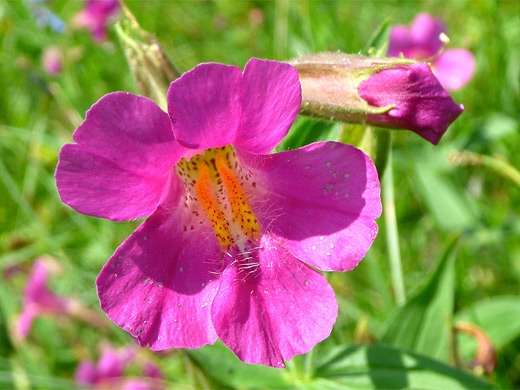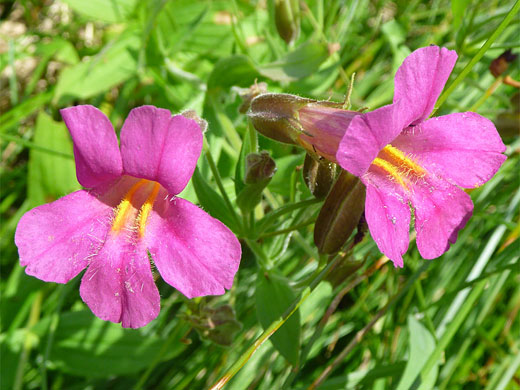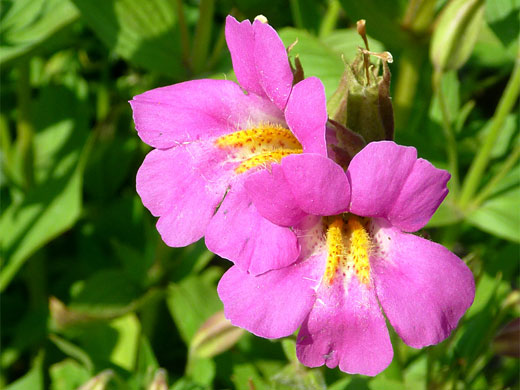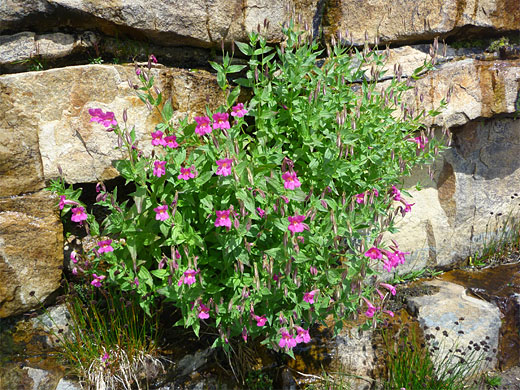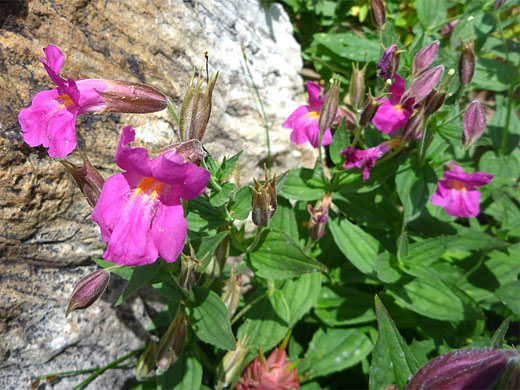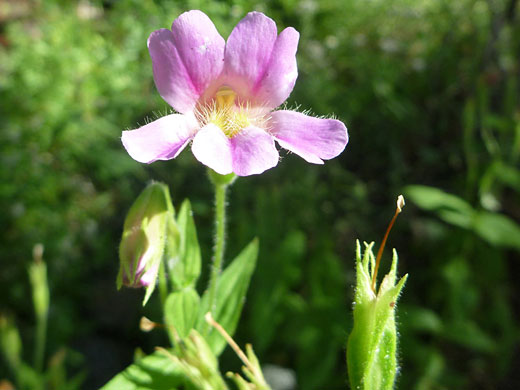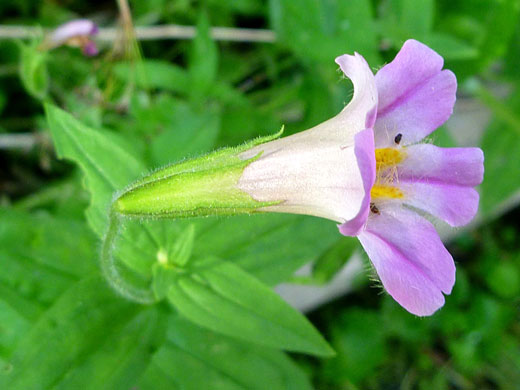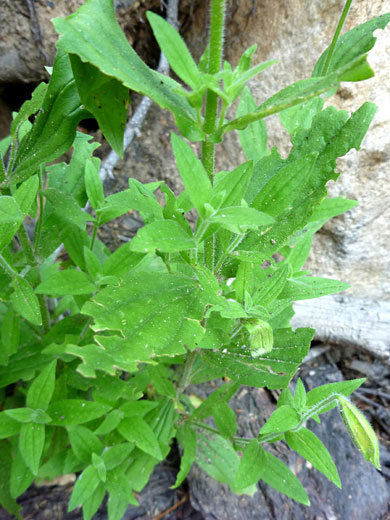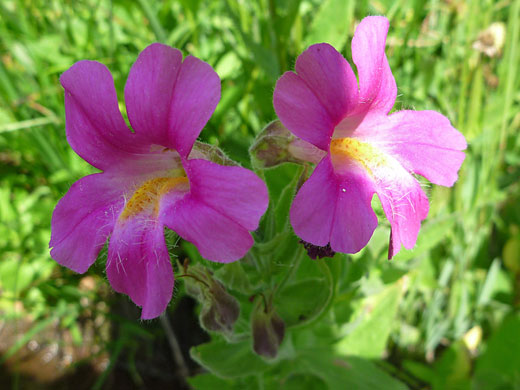Common names:
Lewis' monkeyflower, great purple monkeyflower
Family:
Scientific name:
Mimulus lewisii
Main flower color:
Range:
The Pacific and northern Rocky Mountain states, and Nevada
Height:
Up to 3 feet
Habitat:
Sunny, damp places in high elevation regions
Leaves:
Up to 4 inches long, oblong in shape. Edges may be toothed or entire. Opposite arrangement
Season:
June to August
The rich, bright pink flowers of mimulus lewisii enliven many streams and lakesides in the high mountains of the West, often attracting hummingbirds. Like all monkeyflowers the blooms are bilaterally symmetric, consisting of five lobes, three downwards-pointing and two upwards. The flower centers are whitish, and enclose two prominent yellow structures (nectar guides), covered in fine white hairs and speckled red blotches. The large green leaves have deep lateral grooves (veins) and grow at intervals all the way up the stems, which have multiple flower heads. Favorable (moist, sheltered and sunny) locations produce plants with many dozen flowers.
All Contents © Copyright The American Southwest | Comments and Questions | Contribute | Site Map
